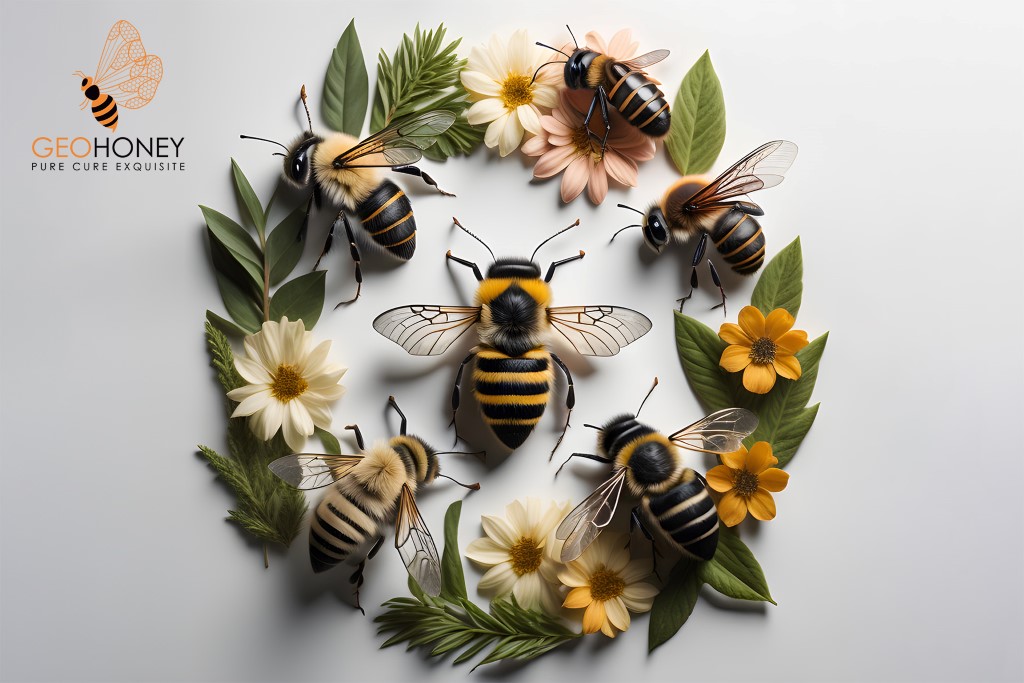- Tokyo: 11:01
- Singapore: 10:01
- Dubai: 06:01
- London: 02:01
- New York: 21:01
Pollinators Working Together for Global Resilience and Biodiversity

Introduction
In a world teeming with life, where every species plays its part, a fascinating alliance unfolds among nature's tireless workers: the pollinators. These extraordinary creatures, from the humble bee to the graceful butterfly, transcend boundaries and species divisions to collaborate for a purpose greater than themselves—global resilience and biodiversity.
They embark on a remarkable journey, crisscrossing continents, sharing resources, and performing nature's intricate symphony of pollination. Join Geohoney as we unravel the secrets of their extraordinary cooperation, uncovering how these tiny ambassadors forge connections, protect ecosystems, and preserve the vibrant tapestry of life on earth. Step into the awe-inspiring world of pollinators working together, where collective efforts shape the destiny of our planet.
The Power of Cooperation:
Pollinators, with their diverse species and habitats, forge remarkable partnerships that defy boundaries. Different species unite to secure the future of countless plants. Witness the astounding symbiotic relationships that transcend individuality, illustrating the profound impact of working together for the survival and abundance of plant life.
Here are some of the benefits of cooperation:
- It can help to achieve common goals.
- It can increase productivity.
- It can create a sense of community.
- It can make the world a better place.
Ecosystem Services Provided by Pollinators:
Pollinators, such as bees, butterflies, and birds, play a crucial role in providing ecosystem services essential for our planet's health. This global pollination is vital for food production, genetic diversity, soil fertility, carbon sequestration, and natural pest control. It is imperative that we take global action on pollination to safeguard these ecosystem services.
Here are some of the ecosystem services provided by pollinators:
Food production: Pollinators are essential for the production of many fruits, vegetables, and nuts. Without pollinators, these crops would not be able to reproduce and we would have a much smaller variety of food to eat.
Biodiversity: Pollinators help to maintain biodiversity by ensuring that a wide variety of plants can survive and thrive. This is important for several reasons, including providing food and shelter for other animals, regulating the climate, and preventing soil erosion.
Water quality: They help prevent soil erosion and regulate nutrient cycling processes that support aquatic life. Without adequate pollinator populations, there would be a decline in plant diversity which could lead to a decrease in the number of nutrients available for other organisms within the ecosystem.
International Collaborations in Pollinator Conservation:
Some international organizations are working to conserve pollinators. Some of these organizations include:
The Convention on Biological Diversity (CBD): The CBD is an international treaty that was adopted in 1992. The CBD's objective is to conserve biological diversity, promote sustainable use of its components, and ensure the fair and equitable sharing of benefits arising from the utilization of genetic resources.
The International Union for Conservation of Nature (IUCN): The IUCN is a global environmental organization that works to conserve nature and promote sustainable development. The IUCN has some programs and initiatives that focus on pollinator conservation.
The Pollinator Partnership: The Pollinator Partnership is a non-profit organization that works to protect pollinators and their habitats. The Pollinator Partnership has many programs and initiatives that focus on education, research, and advocacy.
These are just a few of the international organizations that are working to conserve pollinators.
Synchronized Pollination Strategies:
Synchronized pollination strategies are vital for supporting pollinator populations and enhancing pollination rates. By understanding the importance of cross-pollination and self-pollination, we can implement practices that optimize pollinator activity and maximize plant reproduction. This is essential for food production and biodiversity conservation. Prioritizing synchronized strategies is key to supporting pollinators and safeguarding ecosystems.
The Role of Pollinators in Habitat Restoration:
Pollinators play a vital role in habitat restoration by helping to re-establish plant communities in disturbed ecosystems. When habitats are damaged due to human activities such as logging, mining, or construction, pollinator populations may decline or disappear altogether. Pollinators like bees and butterflies assist in the process of seed dispersal and pollination which is crucial for restoring plant diversity.
The Threats to Pollinator Collaboration:
Pollinator collaboration faces numerous threats that undermine their crucial role in ecosystems. Habitat loss, climate change, pesticide use, and invasive species disrupt habitats and food sources. Fragmented landscapes hinder their ability to transfer pollen effectively. Declining populations and loss of biodiversity further jeopardize their collaborative efforts.
Promoting Pollinator-Friendly Practices:
Promoting pollinator-friendly practices is crucial for supporting pollinator populations and ensuring healthy ecosystems. Some practices that can help include:
- Planting pollinator-friendly gardens with a diversity of flowers and plants that bloom throughout the growing season.
- Avoiding the use of pesticides and using alternative methods for pest management.
- Supporting sustainable agriculture practices that prioritize pollinator health and habitat conservation.
- Raising public awareness about the importance of pollinators and their role in food production and ecosystem health.
- Encouraging policy changes and incentives that promote pollinator-friendly practices and protect pollinator habitats.
Conclusion
Pollinators exemplify the power of collaboration in the natural world, working together to ensure the continuity of countless plant species and the preservation of global biodiversity. By understanding their cooperative behaviors and the challenges they face, we can actively participate in their conservation. Let us recognize and appreciate the remarkable efforts and strive to support their vital role in maintaining global resilience and biodiversity.



